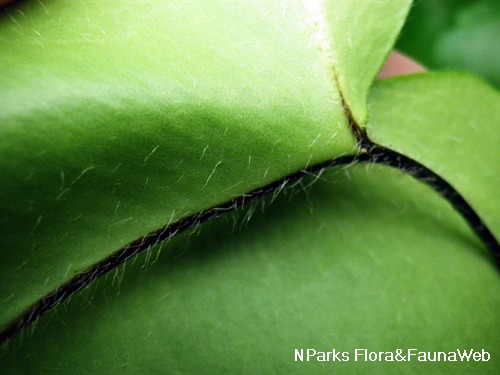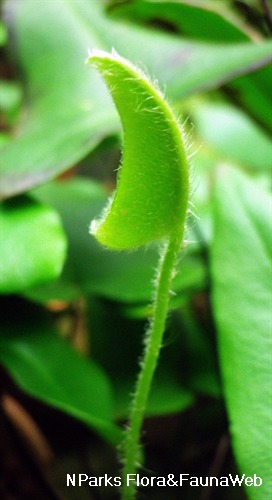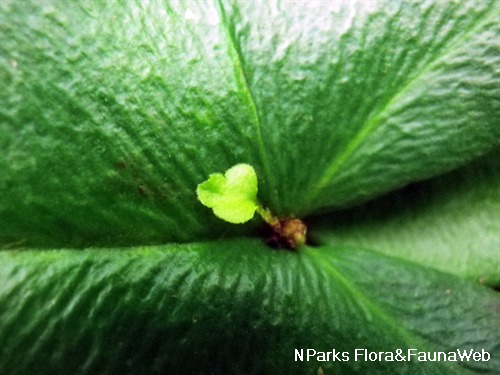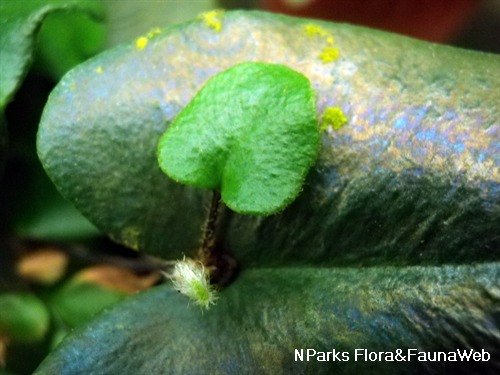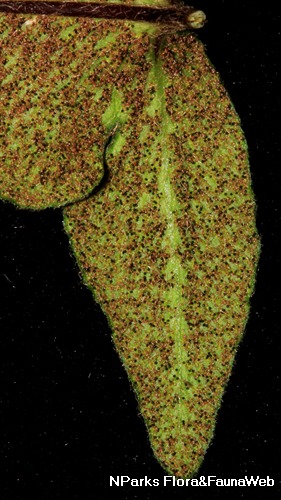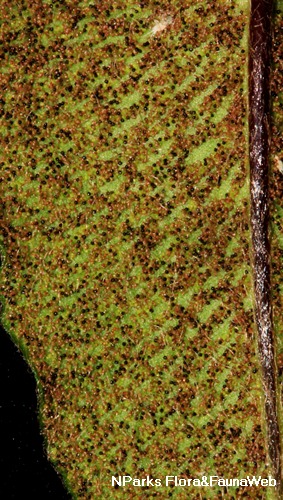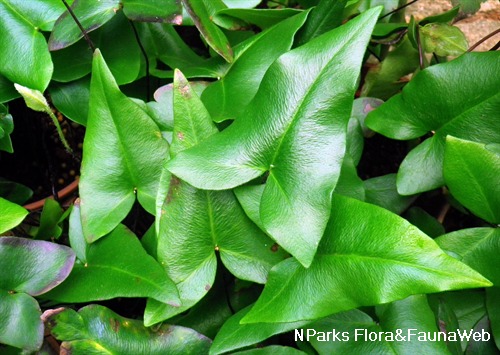
Back
Parahemionitis arifolia (Burm.f.) Panigrahi
| Family Name: | Pteridaceae |
| Synonyms: | Parahemionitis cordata |
| Common Name: | Heart Fern, 泽泻蕨 |
Name
Classifications and Characteristics
| Plant Division | Ferns & Lycophytes (Non-Seed Vascular Plants) (Fern) |
|---|---|
| Plant Growth Form | Epiphyte |
| Lifespan (in Singapore) | Perennial |
| Mode of Nutrition | Autotrophic |
Biogeography
| Native Distribution | India, Sri Lanka, Bangladesh, China (South-Central China, Hainan), Taiwan, Myanmar, Thailand, Laos, Cambodia, Vietnam, Lesser Sunda Islands, Peninsular Malaysia, Philippines. |
|---|---|
| Native Habitat | Terrestrial |
| Preferred Climate Zone | Tropical |
| Local Conservation Status | Non-native |
Description and Ethnobotany
| Growth Form | Small clumping fern to 20 cm tall. |
|---|---|
| Foliage | Fronds sagittate to narrowly cordate, dark green, often with bluish tinge if growing in deep shade; rachis dark brownish black. Undersurface of fronds with sparse hairs. The heart-shaped fronds do not produce spores, while the arrow-shaped fronds bear spores. |
| Reproductive Parts - non-flowering plant | Rachis of fertile fronds approximately two times the length of vegetative fronds; sori rusty golden brown. |
| Etymology | It used to be called Hemionitis arifolia. |
| Ethnobotanical Uses | Medicinal: In India (Kerala), the plant is used in herbal medicine for the treatment of Diabetes mellitus. Sterile fronds are ground into a paste with water for consumption. It is also used to treat aches and burns. Pharmacological studies has shown that extracts from the plant were able to decrease the blood sugar content in glucose fed rats, indicating the presence of hypoglycaemic and anti diabetic activity. |
Landscaping Features
| Desirable Plant Features | Ornamental Foliage, Ornamental Form |
|---|---|
| Landscape Uses | Small Gardens, Interiorscape/ Indoor Plant, Container Planting, Terrarium |
Fauna, Pollination and Dispersal
| Seed or Spore Dispersal | Abiotic |
|---|
Plant Care and Propagation
| Light Preference | Semi-Shade, Full Shade |
|---|---|
| Water Preference | Moderate Water, Occasional Misting, [Remarks] (Prefers high humidity but well drained, loose growing media. Avoid over watering as excessive moisture collecting around the roots will cause the plant to rot.) |
| Rootzone Tolerance | Moist Soils, Well-Drained Soils, Fertile Loamy Soils |
| Maintenance Requirements | Moderate |
| Pest(s) | Sucking Insects |
| Propagation Method | Spore, Division |
Foliar
| Foliage Retention | Evergreen |
|---|---|
| Mature Foliage Colour(s) | Green, Green - Bluish Green |
| Mature Foliage Texture(s) | Powdery / Waxy Bloom, Leathery, Thick |
| Prominent Young Flush Colour(s) | Green |
| Foliar Type | Simple / Unifoliate |
| Foliar Arrangement Along Stem | Basal |
| Foliar Attachment to Stem | Petiolate |
| Foliar Shape(s) | Non-Palm Foliage (Cordate, Sagittate) |
| Foliar Margin | Entire |
| Foliar Apex - Tip | Acute |
| Foliar Base | Cordate, Sagittate |
Image Repository
Others
| Master ID | 31076 |
|---|---|
| Species ID | 5465 |
| Flora Disclaimer | The information in this website has been compiled from reliable sources, such as reference works on medicinal plants. It is not a substitute for medical advice or treatment and NParks does not purport to provide any medical advice. Readers should always consult his/her physician before using or consuming a plant for medicinal purposes. |

